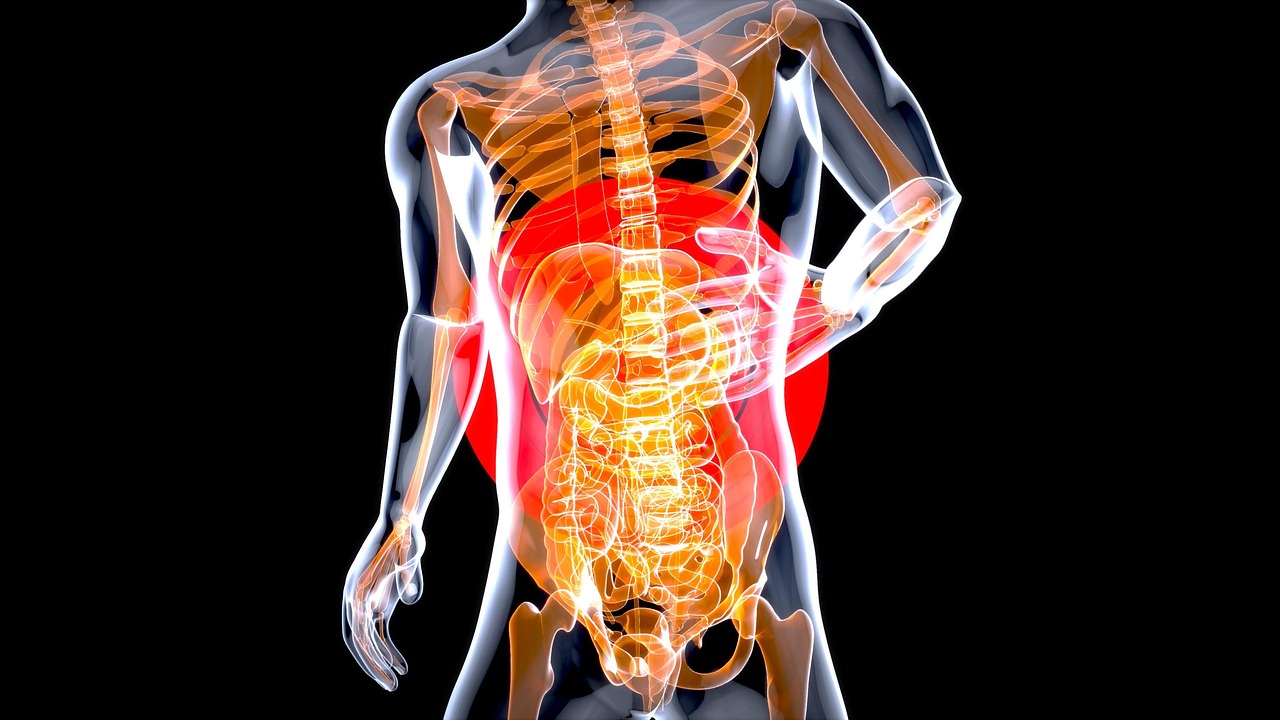Health
The Science Behind Root Canals: How This Treatment Saves Your Teeth

Root canal treatment is a commonly misunderstood dental procedure, often surrounded by myths and misconceptions. However, it is one of the most effective ways to save a damaged or infected tooth, preventing the need for extraction and preserving your natural smile. At its core, the science behind root canals involves removing infected tissue, cleaning the internal canals of the tooth, and sealing them to prevent future issues. With advancements in dental technology, this procedure has become more efficient, less painful, and highly successful, making it a valuable option for patients dealing with severe tooth decay or infection.
Understanding the Anatomy of a Tooth
To grasp the importance of root canal treatment, it’s essential to understand the basic anatomy of a tooth. A tooth consists of three main layers: the outer enamel, the dentin underneath, and the innermost pulp. The pulp contains nerves, blood vessels, and connective tissue, playing a crucial role in the growth and development of the tooth. However, once the tooth has fully matured, the pulp is no longer essential for its function and can be removed if it becomes infected.
When decay or trauma compromises the integrity of the enamel and dentin, bacteria can enter the pulp, causing inflammation and infection. This infection can lead to severe pain, abscess formation, and even tooth loss if left untreated. This is where root canal treatment comes into play, addressing the problem directly at its source.
The Root Canal Procedure: Step by Step
Root canal treatment, also known as endodontic therapy, involves several key steps designed to save the tooth by eliminating infection and preserving its structure. The procedure typically includes:
1. Diagnosis and Planning: The process begins with a thorough examination, often involving X-rays to assess the extent of the infection. Dentists use these images to determine the shape of the root canals and identify any signs of infection in the surrounding bone.
2. Anesthesia: Contrary to popular belief, root canal treatment is not inherently painful. Modern anesthesia techniques ensure that the procedure is virtually painless. The dentist administers a local anesthetic to numb the affected area, allowing the patient to remain comfortable throughout the process.
3. Accessing the Pulp: The dentist creates a small opening in the tooth’s crown to access the infected pulp. Specialized instruments are used to carefully remove the damaged pulp tissue from within the canals.
4. Cleaning and Shaping the Canals: Once the pulp is removed, the dentist cleans and shapes the canals to prepare them for filling. This step is crucial in removing any remaining bacteria and debris, reducing the risk of future infection.
5. Filling and Sealing: After the canals are thoroughly cleaned, they are filled with a biocompatible material called gutta-percha. This material seals the canals, preventing bacteria from re-entering. In most cases, a temporary or permanent filling is placed on top to close the opening created in the tooth.
6. Restoration: Depending on the extent of damage, the treated tooth may need additional restoration, such as a crown, to provide strength and protection. This step ensures that the tooth can function normally and withstand the forces of chewing and biting.
How Root Canal Treatment Saves Your Teeth
The primary goal of root canal treatment is to save a tooth that would otherwise require extraction. By removing the infected pulp and sealing the canals, the procedure eliminates the source of pain and prevents the spread of infection to surrounding tissues. Retaining your natural tooth has numerous benefits, including:
– Preservation of Natural Function: Keeping your natural tooth allows you to maintain normal biting and chewing functions, which are essential for proper digestion and overall health.
– Aesthetics: A natural tooth, especially in the visible areas of your smile, looks and feels better than any artificial replacement. Root canal treatment helps preserve your tooth’s appearance, contributing to a confident smile.
– Preventing Shifting and Misalignment: When a tooth is extracted, neighboring teeth can shift, leading to misalignment and bite problems. Root canal treatment helps maintain the alignment of your teeth, promoting a healthy and stable bite.
Advancements in Dental Technology
The advancements in dental technology have revolutionized the procedure, making root canal treatment more efficient, comfortable, and successful. Some of the key technological advancements include:
– Digital Imaging and 3D Scanning: Modern imaging techniques provide highly detailed views of the tooth’s structure, allowing for precise planning and execution of the procedure.
– Rotary Endodontics: The use of electric-powered rotary instruments speeds up the cleaning and shaping process, making it more efficient and less time-consuming compared to traditional manual methods.
– Enhanced Anesthesia Techniques: Improvements in anesthesia have significantly reduced discomfort during the procedure, making root canal treatment a virtually painless experience.
– Laser-Assisted Endodontics: Lasers can be used to clean and disinfect the canals with greater precision, reducing the risk of infection and improving overall outcomes.
Root canals treatment is a scientifically proven method for saving teeth that would otherwise be lost to infection or decay. Thanks to advancements in dental technology, this procedure is now more accessible and comfortable than ever before. By understanding the science behind root canals and recognizing the benefits of preserving your natural teeth, patients can make informed decisions about their oral health and enjoy the long-term advantages of a healthy, functional smile.
Health
Spiked Coffee Recipe: Elevate Your Brew with a Boozy Twist

Ever wondered how to turn your morning coffee into a happy hour treat? Whether you’re hosting brunch, winding down after dinner, or just craving something different, spiked coffee is the perfect way to blend rich flavors with a spirited kick. From classic Irish Coffee to creative modern twists, we’ve got expert-backed recipes, pro tips, and everything you need to craft the perfect boozy brew.
Why Spiked Coffee?
Spiked coffee isn’t just a winter warmer—it’s a versatile drink that can be enjoyed year-round. According to mixologists, the combination of coffee’s bitterness and the sweetness or smokiness of liquor creates a balanced, complex flavor profile. Plus, caffeine and alcohol have an interesting synergy—when consumed in moderation, the buzz can feel more uplifting than a standard cocktail.
Best Alcohols for Spiking Coffee
Not all spirits pair well with coffee. Here are the top choices:
✔ Whiskey (Bourbon, Irish, or Rye) – Adds warmth and depth.
✔ Rum (Dark or Spiced) – Brings caramel and vanilla notes.
✔ Kahlúa or Coffee Liqueur – Enhances coffee flavor with sweetness.
✔ Baileys Irish Cream – Creamy, smooth, and slightly sweet.
✔ Vodka (Flavored or Plain) – Neutral taste, great for chilled recipes.
✔ Amaretto – Nutty and aromatic, perfect for dessert-like coffee.
5 Must-Try Spiked Coffee Recipes
1. Classic Irish Coffee (The Timeless Favorite)
Ingredients:
-
1 cup hot brewed coffee
-
1.5 oz Irish whiskey
-
1 tbsp brown sugar
-
Heavy cream (lightly whipped)
Instructions:
-
Preheat a glass with hot water, then discard.
-
Add sugar and coffee, stirring until dissolved.
-
Stir in whiskey.
-
Gently float whipped cream on top (pro tip: pour over the back of a spoon).
-
Sip without stirring to enjoy the layers.
Why It Works: The cream mellows the whiskey’s bite while the sugar balances the coffee’s bitterness.
2. Espresso Martini Coffee (A Caffeinated Cocktail)
Ingredients:
-
1 oz vodka
-
1 oz Kahlúa
-
1 oz fresh espresso (chilled)
-
½ oz simple syrup
-
Ice
-
Coffee beans (garnish)
Instructions:
-
Shake all ingredients with ice until well-chilled.
-
Strain into a martini glass.
-
Garnish with coffee beans.
Perfect For: A post-dinner pick-me-up with a sophisticated edge.
3. Bourbon Spiked Cold Brew (Smooth & Refreshing)
Ingredients:
-
1 cup cold brew coffee
-
1.5 oz bourbon
-
½ oz maple syrup
-
Orange zest (optional)
Instructions:
-
Fill a glass with ice.
-
Add cold brew, bourbon, and maple syrup.
-
Stir well and garnish with orange zest.
Why It’s Great: The maple syrup complements bourbon’s smokiness, while cold brew keeps it smooth.
4. Coconut Rum Iced Coffee (Tropical Twist)
Ingredients:
-
1 cup iced coffee
-
1.5 oz coconut rum
-
1 oz cream of coconut
-
Whipped cream & toasted coconut flakes (garnish)
Instructions:
-
Shake coffee, rum, and cream of coconut with ice.
-
Strain into a tall glass over fresh ice.
-
Top with whipped cream and coconut flakes.
Ideal For: Summer sipping by the pool.
5. Salted Caramel Spiked Latte (Decadent Dessert Drink)
Ingredients:
-
1 cup brewed coffee
-
1 oz caramel vodka
-
½ oz butterscotch schnapps
-
1 tbsp salted caramel sauce
-
Steamed milk
-
Whipped cream & extra caramel drizzle
Instructions:
-
Mix coffee, vodka, schnapps, and caramel sauce.
-
Add steamed milk and stir.
-
Top with whipped cream and extra caramel.
Why You’ll Love It: A boozy take on your favorite coffeehouse treat.
Expert Tips for the Best Spiked Coffee
✅ Quality Matters – Use freshly brewed coffee for the best flavor.
✅ Balance Sweetness – Adjust sugar or syrup to taste.
✅ Temperature Control – Hot coffee should be hot, cold drinks should be chilled.
✅ Garnish Like a Pro – Cinnamon, cocoa powder, or citrus zest elevate presentation.
✅ Know Your Limits – Caffeine + alcohol can be dehydrating; drink water between servings.
Final Thoughts: Spiked Coffee Recipe
Spiked Coffee Recipe is more than just a cocktail—it’s an experience. Whether you prefer the boldness, the creaminess of Baileys, or the tropical vibes, there’s a boozy coffee recipe for every palate. Next time you’re craving something beyond your usual cup, try one of these recipes and savor the rich, spirited flavors.
Health
Apple Cider Vinegar Tonic: A Powerhouse Elixir for Health?

Could a simple kitchen staple be the secret to better digestion, weight loss, and glowing skin?
Apple cider vinegar (ACV) has been a folk remedy for centuries, but modern science is now catching up to its potential benefits. From detox tonics to immune-boosting shots, ACV is making waves in the wellness world. But does it live up to the hype?
In this deep dive, we’ll explore:
✅ The science-backed benefits of apple cider vinegar tonic
✅ How to make it (plus delicious variations)
✅ Potential side effects and who should avoid it
✅ Real-world success stories from ACV enthusiasts
Let’s separate fact from fad and uncover whether this tangy tonic deserves a spot in your daily routine.
What Is Apple Cider Vinegar Tonic?
Apple cider vinegar tonic is a diluted mixture of ACV, water, and often additional ingredients like honey, lemon, or spices. Unlike straight ACV (which can damage tooth enamel and irritate the throat), a tonic makes it safer and more palatable.
Why the “Mother” Matters
Raw, unfiltered ACV contains the “mother”—a cloudy substance rich in probiotics, enzymes, and acetic acid. This is where most of the health benefits come from. Always opt for organic, unpasteurized ACV with the mother for maximum potency.
6 Science-Backed Benefits of Apple Cider Vinegar Tonic
1. Supports Healthy Digestion
ACV’s acetic acid may boost stomach acid production, aiding digestion and reducing bloating. A 2016 study in Journal of Clinical Gastroenterology found that ACV helps with gastric emptying, which can prevent acid reflux.
Pro Tip: Sip 1 tbsp ACV in water before meals to kickstart digestion.
2. May Aid Weight Loss
Several studies suggest ACV can promote satiety and reduce calorie intake. A 2018 study in Journal of Functional Foods found that participants who consumed ACV daily lost more weight than those who didn’t.
How it works: Acetic acid may suppress fat storage and curb sugar cravings.
3. Balances Blood Sugar Levels
Research in Diabetes Care (2004) showed that ACV improves insulin sensitivity by 19-34% after high-carb meals. This makes it a potential ally for diabetics and prediabetics.
Best Time to Drink: Before or with meals to blunt blood sugar spikes.
4. Boosts Immunity
The antimicrobial properties of ACV (thanks to acetic acid) may help fight pathogens. Some people use it as a natural sore throat remedy or immune tonic during cold season.
Try This: Mix ACV with honey, ginger, and warm water for a soothing immune shot.
5. Enhances Skin Health
Diluted ACV can act as a natural toner, balancing skin pH and reducing acne. Its antibacterial properties may also help with eczema and dandruff.
Caution: Always dilute (1 part ACV to 3 parts water) to avoid irritation.
6. Detoxifies the Body
While the liver does most of the detox work, ACV may support liver function by promoting circulation and lymphatic drainage. Some detox regimens include ACV as a morning cleanse.
How to Make the Perfect Apple Cider Vinegar Tonic
Basic Recipe
-
1-2 tbsp raw apple cider vinegar (with mother)
-
8 oz warm or cold water
-
Optional: 1 tsp honey, lemon juice, cinnamon, or cayenne
Instructions:
-
Mix ACV and water.
-
Add optional flavor boosters.
-
Drink once daily (best in the morning or before meals).
5 Delicious Variations
-
Metabolism Booster: ACV + lemon + cayenne
-
Gut-Healing Tonic: ACV + ginger + turmeric
-
Immune Shot: ACV + honey + cinnamon
-
Hydrating Electrolyte Drink: ACV + coconut water + sea salt
-
Bedtime Relaxation Tonic: ACV + chamomile tea + raw honey
Potential Side Effects & Who Should Avoid It
While ACV is generally safe, overuse can cause:
-
Tooth enamel erosion (always dilute and rinse mouth after)
-
Throat irritation (never drink undiluted)
-
Low potassium levels (avoid if on diuretics)
-
Digestive upset (start with 1 tsp and increase gradually)
Who Should Skip It?
-
People with acid reflux (can worsen symptoms in some)
-
Those with sensitive stomachs or ulcers
-
Anyone on diabetes meds (consult a doctor first)
Real-World Success Stories
✔ Sarah, 34: “ACV tonic helped me lose 12 lbs in 3 months by curbing my sugar cravings.”
✔ Mark, 42: “My fasting blood sugar dropped 20 points after adding ACV before meals.”
✔ Lisa, 28: “My skin cleared up within weeks of using ACV as a toner.”
Final Verdict: Should You Try It?
Apple cider vinegar tonic isn’t a magic cure-all, but research and anecdotal evidence suggest it can be a powerful addition to a healthy lifestyle.
Key Takeaways:
🔹 Start small (1 tsp in water) and increase gradually.
🔹 Always dilute to protect teeth and throat.
🔹 Pair with a balanced diet for best results.
Health
Ortho Biotics: The Gut Health Revolution You Need to Know About

Did you know that nearly 70% of your immune system resides in your gut? If you’ve been struggling with digestive issues, low energy, or frequent illnesses, the solution might lie in a powerful yet often overlooked ally: ortho biotics.
Unlike traditional probiotics, ortho biotics take gut health to the next level by combining scientifically proven strains with synergistic nutrients for maximum impact. In this article, we’ll explore what ortho biotics are, why they matter, and how you can use them to transform your health—backed by research and real-world results.
What Are Ortho Biotics? (And How Are They Different from Probiotics?)
Ortho biotics are advanced, targeted probiotic formulations designed to work in harmony with your body’s natural microbiome. The term “ortho” (meaning “correct” or “right”) highlights their precision-based approach—unlike generic probiotics, ortho biotics are:
✔ Strain-Specific – Only clinically validated strains are included.
✔ Synergistic – Combined with prebiotics, postbiotics, or enzymes for better absorption.
✔ Dose-Optimized – Delivering effective CFUs (colony-forming units) for real results.
Why Your Current Probiotic Might Not Be Enough
Many store-bought probiotics contain low-quality strains that die before reaching your gut. Others lack the right supporting nutrients for colonization. Ortho biotics solve these problems by:
-
Surviving stomach acid (thanks to delayed-release capsules).
-
Including prebiotics (like FOS or inulin) to feed good bacteria.
-
Boosting postbiotics (beneficial byproducts like short-chain fatty acids).
The Science-Backed Benefits of Ortho Biotics
Research shows that a balanced gut microbiome impacts nearly every aspect of health. Here’s what ortho biotics can do for you:
1. Supercharge Digestion & Reduce Bloating
Struggling with IBS, constipation, or indigestion? Studies suggest that targeted strains like Bifidobacterium lactis and Lactobacillus plantarum can:
-
Improve bowel regularity (Source: Journal of Clinical Gastroenterology).
-
Reduce bloating by balancing gut bacteria (NIH Study).
Real-World Example: A 2023 trial found that participants taking ortho biotic blends reported 40% less bloating within 4 weeks.
2. Strengthen Immunity
Since most immune cells live in the gut, ortho biotics help:
-
Increase IgA antibodies (critical for immune defense).
-
Lower inflammation linked to autoimmune conditions (Harvard Health).
3. Enhance Mental Health (The Gut-Brain Connection)
Your gut produces 90% of serotonin—the “feel-good” hormone. Strains like Lactobacillus helveticus and Bifidobacterium longum are linked to reduced anxiety and depression (Nature Reviews Neuroscience).
4. Support Weight Management
Certain strains help regulate appetite hormones and reduce fat storage. A 2022 meta-analysis found that ortho biotic users lost 3x more weight than placebo groups.
How to Choose the Best Ortho Biotic Supplement
Not all products are created equal. Follow these expert-backed tips:
✅ Look for These Strains (Proven Effective in Studies)
-
Lactobacillus rhamnosus GG – Fights diarrhea and infections.
-
Bifidobacterium bifidum – Strengthens gut lining.
-
Saccharomyces boulardii – A probiotic yeast that combats pathogens.
✅ Avoid These Common Pitfalls
-
Low CFU Counts – Aim for 10–50 billion CFUs (more isn’t always better).
-
No Prebiotics – Without fuel, probiotics won’t thrive.
-
Cheap Fillers – Skip brands with maltodextrin or artificial additives.
✅ Top Ortho Biotic Supplements (2024 Picks)
-
Seed DS-01 – A synbiotic (probiotic + prebiotic) with 24 strains.
-
Just Thrive Probiotic – Spore-based for superior survival.
-
Ritual Synbiotic+ – Includes postbiotics for gut repair.
Beyond Supplements: Ortho Biotic Foods for Daily Gut Health
Supplements help, but food comes first. Add these ortho biotic-rich foods to your diet:
-
Fermented foods: Sauerkraut, kimchi, kefir, miso.
-
Prebiotic fibers: Garlic, onions, asparagus, bananas.
-
Bone broth: Heals the gut lining with collagen.
Pro Tip: Start slow—too much too fast can cause temporary bloating.
Final Thoughts: Is Ortho Biotic the Future of Gut Health?
The evidence is clear: ortho biotics are a game-changer for digestion, immunity, mood, and metabolism. Unlike generic probiotics, they deliver precision, potency, and proven results.
Your Action Plan:
-
Audit your gut health – Track symptoms like bloating, fatigue, or cravings.
-
Pick a high-quality ortho biotic – Use our criteria above.
-
Eat for your microbiome – Load up on fermented and fiber-rich foods.
Ready to transform your gut? The ortho biotic revolution is here—and your health will thank you.
-

 Articles3 months ago
Articles3 months agoHow Many Times Can You Regrow Green Onions
-

 News10 months ago
News10 months agoUnderstanding HotLeaks: What You Need to Know
-

 Fashion8 months ago
Fashion8 months agoOpals in the USA: A Gemstone Transforming the Crystal Healing Market
-

 Technology1 year ago
Technology1 year agoThe Wonders of Oh Em Gee Blog
-

 Entertainment7 months ago
Entertainment7 months agoHow to Use Snaptik: A Complete Guide to Download TikTok Videos
-

 Entertainment1 year ago
Entertainment1 year agoBare it All: Unforgettable Skinny Dipping Stories Shared
-

 Health1 year ago
Health1 year agoCan You Smoke Shrooms? Exploring the Myths and Realities
-

 Articles5 months ago
Articles5 months agoWHAT IS THE DIFFERENCE BETWEEN SEED GARLIC AND FOOD GARLIC?
